The Gate of the Sun: A megalithic solid stone structure, confusing experts ever since
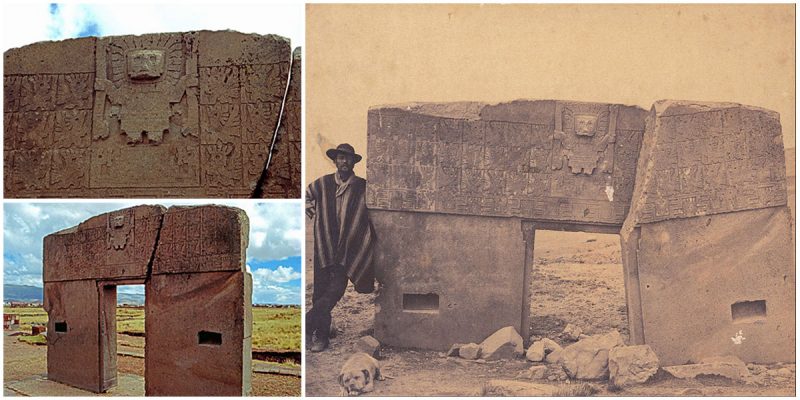
Tiwanaku city can be found at an approximate altitude of 12,500 feet, close to the famed Lake Titicaca in what is nowadays Bolivia. Archaeological evidence has pointed to the existence of a more modern city but also remains of an ancient one, constructed mostly of adobe.
The Tiwanaku culture started sprouted from a small settlement, which at later point evolved into a larger city, probably between the 5th and the 9th century, archaeologists say. Evidence in the field suggests that elaborate structures likely fulfilled religious purposes, but also provided well developed infrastructure to ease everyday life, such as an underground drainage system.
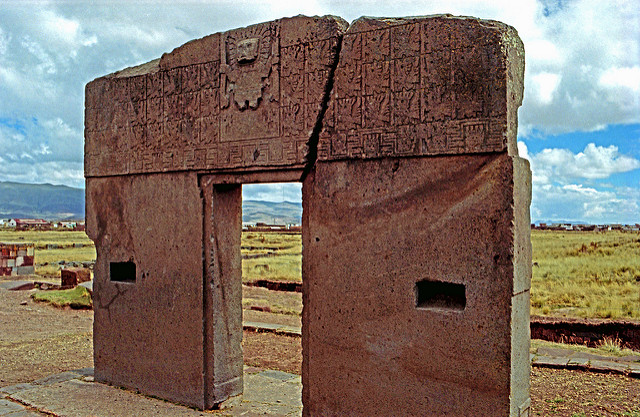
The Gate of the Sun, one of the most famed remnants left by the Tiwanaku, a pre-Columbian polity based in the city of Tiwanaku in western Bolivia. Author: Dennis Jarvis, CC BY-SA 2.0
Temples and structures can be traced back to various periods. One of the most intriguing is the Pyramid of Akapana, which once incorporated seven platforms in its structure and reached a height of nearly 60 feet, but today only ruins remain. Near the Akapana pyramid is one more place that, since the rediscovery of Tiwanaku by European explorers of the 19th century, has dazzled archaeologists as well as people who have put their hearts into learning more about ancient cultures.
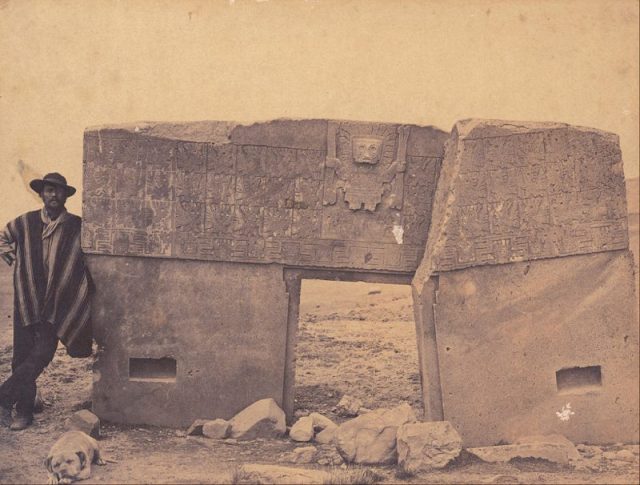
The Gate of the Sun was rediscovered by European explorers in the mid-19th century
It is called Kalasasaya, a spacious open temple was probably once been used as an observatory. It can be entered by ascending seven steps placed on its eastern side, and it is surrounded by several stone structures and monoliths, including the Gate of the Sun, perhaps the most significant remnant of ancient Tiwanaku art.
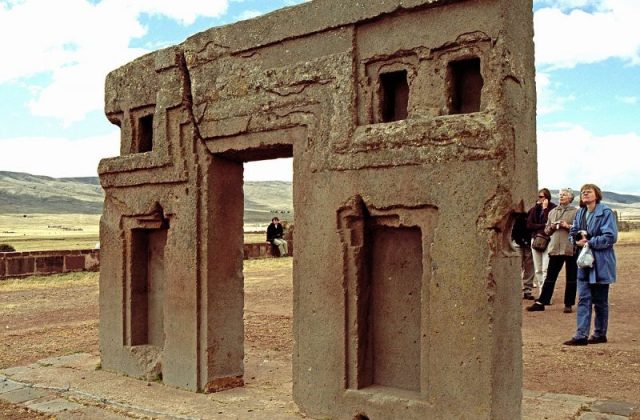
Carved from a single massive block of andesite stone. Author: Dennis Jarvis, CC BY-SA 2.0
The Gate of the Sun is carved from one massive block of andesite stone. It measures a little over nine feet in height and nearly 12.5 feet in width, while the gate opening itself is 4.6 feet wide. Just above the gate opening is the most prominent feature of the ancient remnant, a bas-relief depiction of a deity whose head appears to be garnished by an interesting head-dress, or perhaps these are rays emitting from its face in all directions. The deity also holds a staff in each of its two hands.
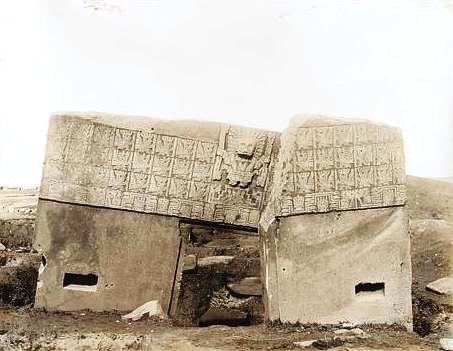
Gate of the Sun, rear view (1903)
It is theorized by some historians that the deity is the Sun God. Others believe that marks on its face represent tears, so the figure is also known as the “Weeping God.” More sources cite that this is a pan-Andean god, the forerunner of the Inca deity of creation, Viracocha.
According to the related cosmogony myth, Viracocha emerged from Lake Titicaca when the world was in total darkness and brought light to it by creating the sun, the moon, and the stars. Then Viracocha created mankind by breathing life into the stones. However, his first creations were giants which were incapable of thinking. Dissatisfied with his creation, the deity destroyed them and created better ones, out of smaller stones.
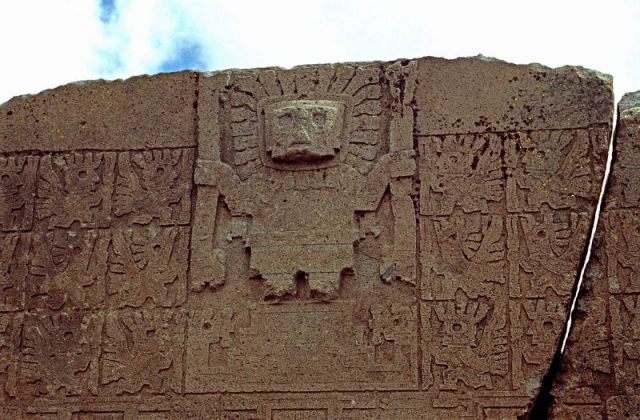
Caption showing the central character, who remains enigmatic despite a lot of speculation, Author: Dennis Jarvis, CC BY-SA 2.0
Surrounding the mysterious central character on the Gate of the Sun are 48 depictions of bird-like and human-like figures, and these effigies have been designated as the “God Messengers.”
Due to the mysterious nature of the gate, interpretations of its purposes have been numerous too, many of which are confounding and far-fetched, with one even claiming that this was a portal to other dimensions. In a religious connotation, it might have been considered a portal perhaps to “the world of the gods.” One of the more accepted interpretations, though, is that the Gate of the Sun served as a sort of agricultural calendar. Hence, another alternative name ascribed to it, the “Calendar Gate.”
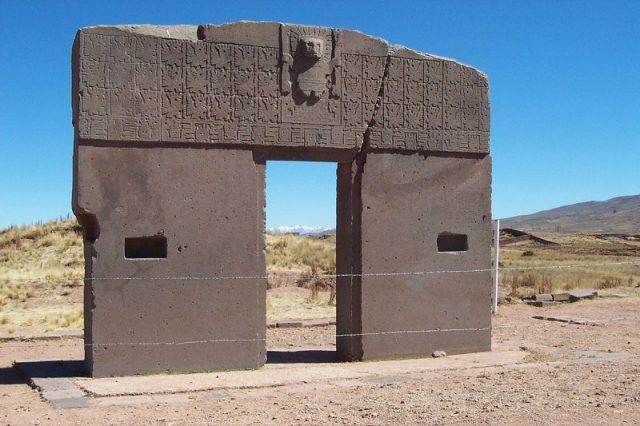
Surrounding the face are 48 figures called ‘chasquis’ or God Messengers
Some supporters of the theory that this was a calendar gate say that it reflected a solar year, but one differing from the solar year we know today. It seems to be 290 days long–with 12 months that consisted of 24 days plus an extra 2 days.
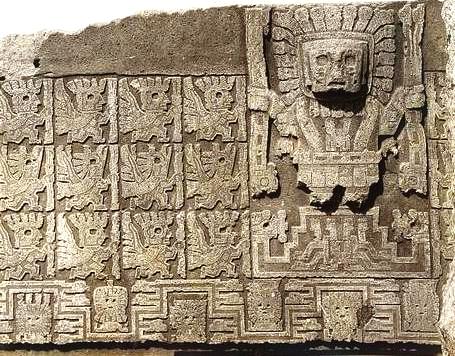
32 of the effigies have human faces, and 16 have condors’ heads.
Another question of heated debate concerning the gate is its age, with some scholars estimating that it was built as long as 14,000 years ago. A small number of the figures found on its surface are believed to be unfinished, a sign to other researchers that the gate is much younger.
What is certain is that the Gate of the Sun is an important reminder of the lost Tiwanaku culture, and in the context of Andes myths of cosmogony, the entire city is undoubtedly a significant place of interest, one in which its settlers perfected the technology and skills to carve and polish different stone materials.
Read another story from us: In 1974, the legendary pharaoh Ramesses II was issued a valid Egyptian passport so that his 3,000-year-old mummy could be flown to Paris for necessary repair
According to UNESCO, the political dominance of Tiwanaku began its decline in the 11th century, and by the first half of the 12th century, it was lost. As an archaeological site, Tiwanaku still preserves a “very high degree of authenticity,” however we will never be able to know all aspects of this culture in full detail.
Related Post
A shocking documentary proves that mermaids do exist
SHOCKING Revelation: Thuya, Mother of Queen Tiye, Was the Grandmother of Akhenaten and Tutankhamun—What Ancient Egyptian Secrets Did She Leave Behind?
Breaking News: Astonishing Discoveries at Karahan Tepe Confirm an Extraterrestrial Civilization is Hiding on Earth, and NO ONE Knows!
Breaking News: Researchers FINALLY Discover U.S. Navy Flight 19 After 75 Years Lost in the Bermuda Triangle!
NASA’s Secret Investigation: Uncovering the Astonishing Mystery of the UFO Crash on the Mountain!
Explosive UFO Docs LEAKED: Startling Proof That Aliens Ruled Ancient Egypt!